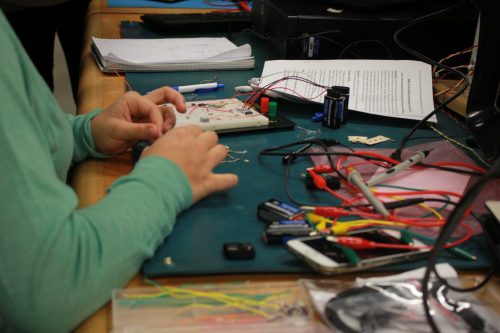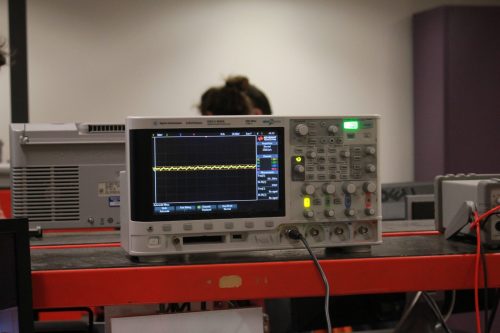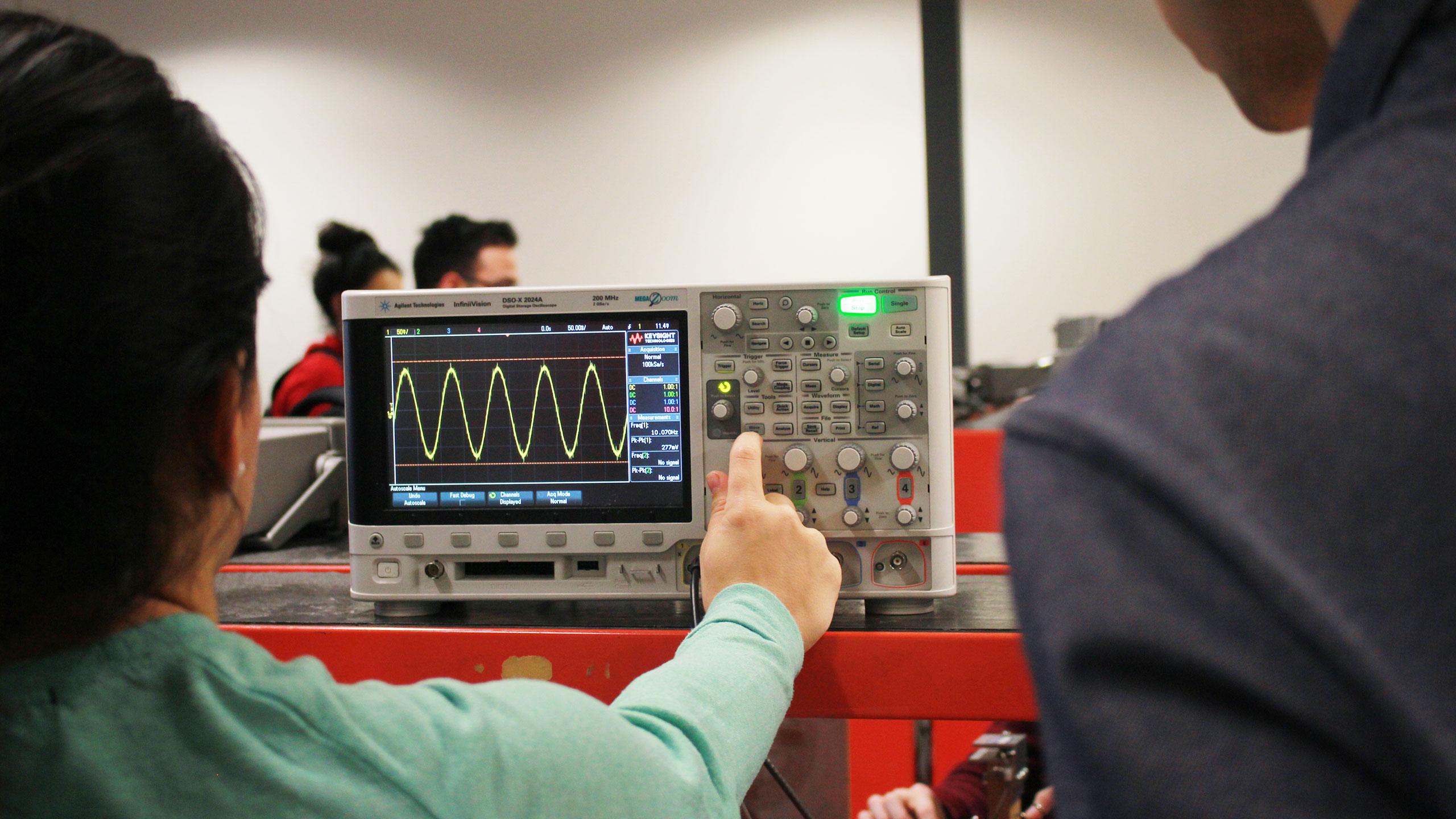By Emily Moore
Third-year biomedical engineering students have made heart stopping projects come to life by building electrocardiograms (ECG) from scratch in the span of only four weeks.
An ECG machine measures the activity of the heart by monitoring the electrical signals the heart gives off. Putting electrodes on the skin sends the information to the machine and can detect heart disease and heart abnormalities. It’s essentially what makes any episode of Grey’s Anatomy that much more dramatic.
From the various components to putting it all together, building an ECG machine can get tricky. You need to have the correct measurement of power and they must be put in correctly for the machine to pick up the electrical signals from the heart. If any of these components are off, the machine will measure a different part of the body and there is a risk of electrocution.

The project was completed in Karthi Umapathy’s biomedical instrumentation class. Students learn how to design medical devices that measure signals from living human beings, and how to design for electrical safety. If you close your eyes, it sounds like a regular classroom plopped itself into the middle of a hospital room—shuffling papers, chatty students and the sporadic beeping coming from about a dozen monitors.
“The output will “look like peaks and valleys”
An ECG is relatively safe to work with and requires precision in all aspects of its design and build. As it turns out, there are online tutorials that can teach you how to build an ECG at home, but the first step is “know your stuff.”
“It’s a long process—it takes all the courses that we [have taken] so far [and] all the theory [that we have learned],” said Michael Shulman, third-year biomedical engineering student who completed the lab.
With the materials provided to them by the school, students choose what they need and begin to assemble their circuit. While building the circuit, they create an output for attaching electrodes to the body. The machine goes through a few rounds of testing to make sure the electricity is working properly and that it is safe. When they have all of the components together “the TA will analyze and test the device before [we] get to,” said Shulman.

The students are then able to test their devices on each other, and see if they designed their device correctly for maximum accuracy. When they get the correct assembly the output will “look like [peaks and valleys], continue and look crisp [on the machine],” said Shulman.
Azin Mirzajavadkhan, a third-year biomedical engineering student who also just completed the lab said, “the biggest takeaway [is] that you have these small goals and you finally reach a big goal—which was like putting all these small components together and finally getting the entire signal to work.”
For her final project for the course, Mirzajavadkhan and her partner plan to create a circuit timer to use along with the ECG to measure heartbeats per minute.
This class will move on to their final projects which sees them continue to build on their knowledge and create more measuring devices.











Leave a Reply